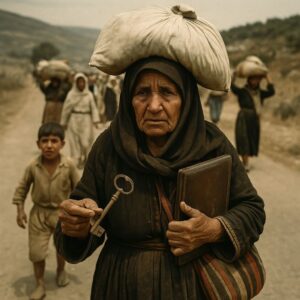On May 15, 1948, as Israel celebrated its birth, hundreds of thousands of Palestinians began a long, painful journey into exile. What for some marked a new beginning, for others became the end of home as they knew it. They call it al-Nakba—”the catastrophe.”
By the time the guns quieted, over 700,000 Palestinians had fled or been expelled from their towns and villages. Some left amid chaos and fear. Others were forced out at gunpoint. In their hands, they carried house keys, deeds, and family heirlooms—symbols of a life they believed they would soon return to. Decades later, many of those keys remain, passed down like sacred relics, though the doors they once opened no longer stand.
The Nakba was not just a singular event—it was the beginning of one of the most enduring refugee crises in modern history. Families were scattered across Lebanon, Jordan, Syria, the West Bank, Gaza. Refugee camps meant for temporary shelter became permanent cities of limbo. And with every passing generation, identity hardened around loss, resistance, and longing.
The global community has often viewed the Palestinian displacement as a geopolitical issue. But at its heart, the Nakba is a human story. It is about grandmothers still speaking of the olive trees in their lost villages, children learning about a land they’ve never seen, and entire communities built around the fragile hope of return.
The Nakba reminds us that behind every refugee statistic is a home that vanished, a story interrupted, and a future reshaped by forces beyond one’s control. It challenges the world not only to acknowledge historical trauma but to reckon with the enduring wounds of unresolved injustice.

